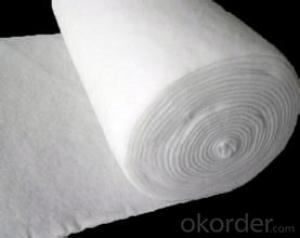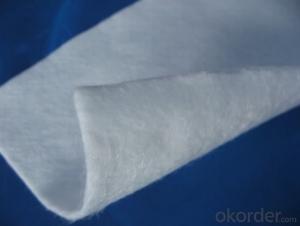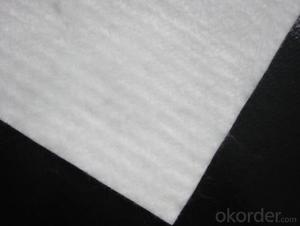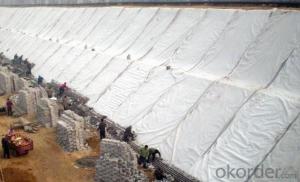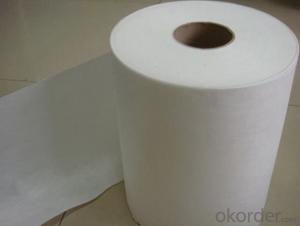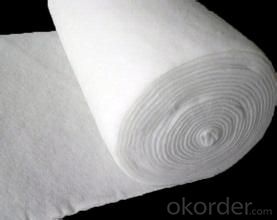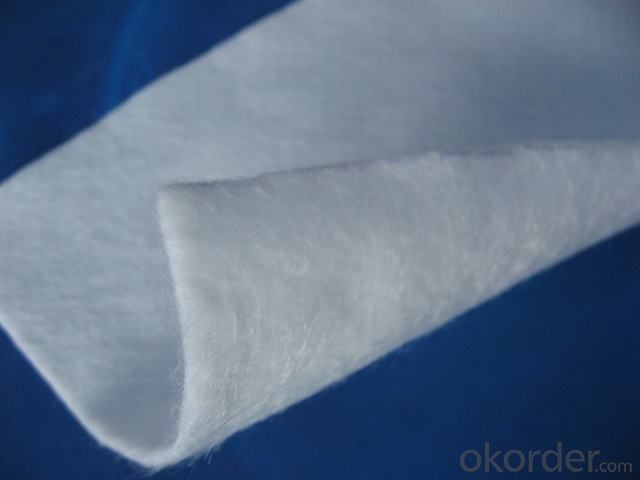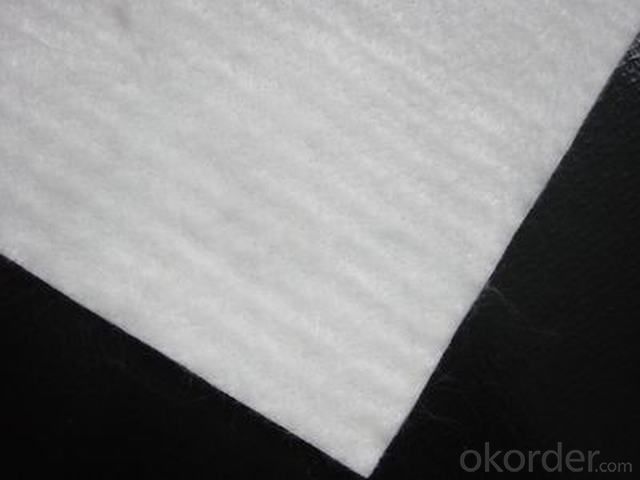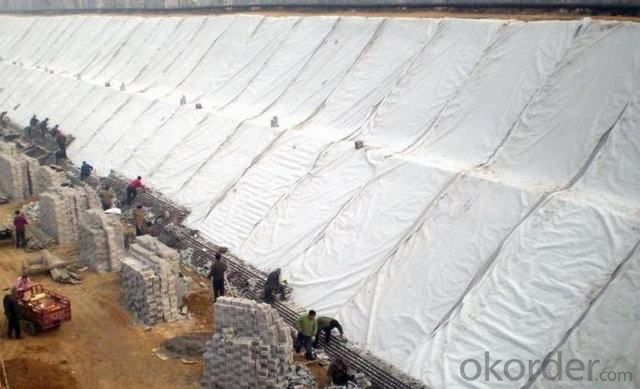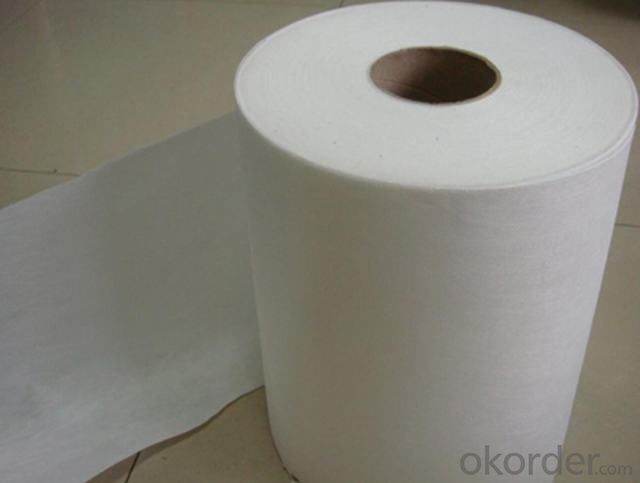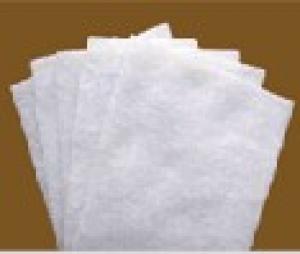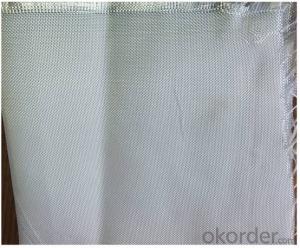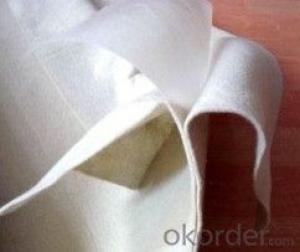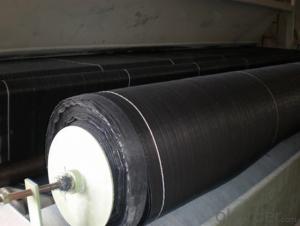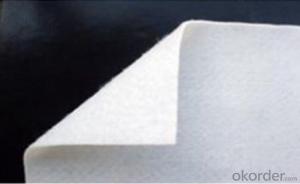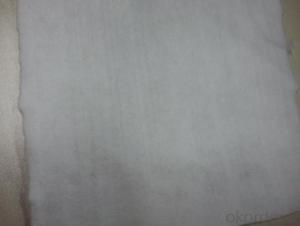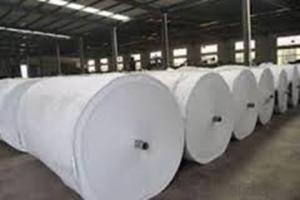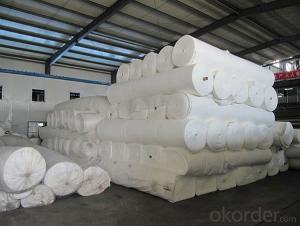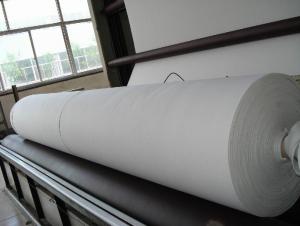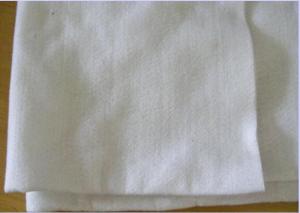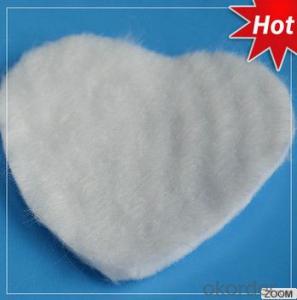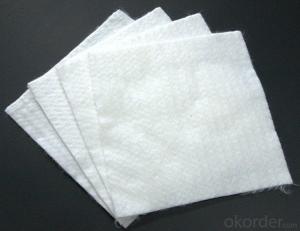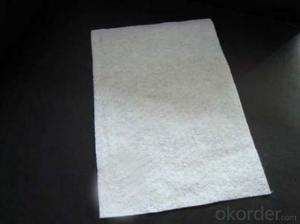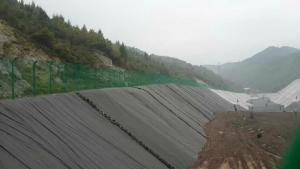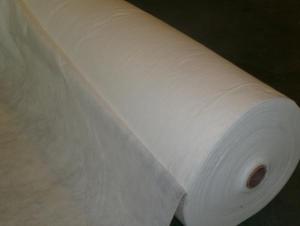Geotextile Grids Filament Non-Woven Geotextile for Dam Construction
- Loading Port:
- Qingdao
- Payment Terms:
- TT OR LC
- Min Order Qty:
- 20000 m²
- Supply Capability:
- 1500000 m²/month
OKorder Service Pledge
OKorder Financial Service
You Might Also Like
Applications of Filament Non-woven Geotextile for Railway Construction:
1) Filtration :
The filtration layer of the dykes, river canal, seacoast, concrete slope, retaining walls. At the same time of preventing the clay granule from passing, it allows the water and the gas pass through freely.
2) Separation :
The isolation of the railway dregs and the roadbed, roadbed and the soft base, surface of the airdrome and parking lot and the groundsill, different dam materials. It isolates the soil and the gravel of two kinds different granule pathway from the groundsill or other buildings.
3) Adding muscle :
The highway, railway, soil-stone dam, breakwater, airport, backfill soil of retaining wall, slope protection, etc in which distributes the earth stress, prevents the side-displacement of the earth body and improves the earth body stability.
4) Protection :
It prevents the bank from being washed out, protects the bank and the bottom, prevents the water and soil from being washed away.
Features of Filament Non-woven Geotextile for Railway Construction:
1) Staple fibers needle punched non woven geotextile
The geotextile is made of polypropylene staple fibers on cross-laying equipment and needle punched equipment. It owns the advantages of acid and alkali resistance, erosion resistance, aging resistance, large strength, stable size, good filtrability etc.
2) Filament non woven geotextile
Filament geotextile has features as follows: High strength, good capacity of elongation and high biology tolerance, alkali tolerance, acidity tolerance, weather resistance good filtration and fine drainage capacity etc. Also it is of low cost, easy in construction and use effects.
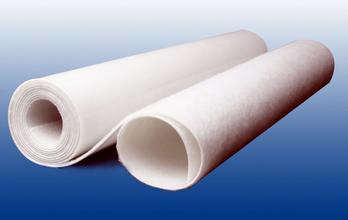
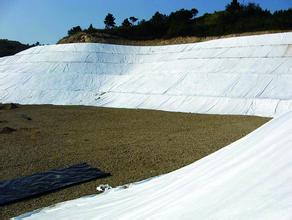
- Q: Will you master knitting reinforced geotextile H and reinforced geotextile What is the difference? In addition, how to distinguish between spunbond and weaving in reinforced geotextiles? More
- Texture and material ratio is different ah.
- Q: What are the geotextiles for concrete health
- Concrete health with the geotextile, I probably understand what you mean is planted in the above plant flowers and the like, it can be used Daxiang non-woven geotextile can, and hope to help you!
- Q: Can geotextiles be used in the protection of retaining walls?
- Yes, geotextiles can be used in the protection of retaining walls. Geotextiles are permeable fabrics that can provide reinforcement and stabilization to the soil behind the retaining wall. They can help prevent erosion, reduce water pressure, and improve the overall stability and longevity of the retaining wall.
- Q: How are geotextiles incorporated into engineering designs?
- Geotextiles are commonly incorporated into engineering designs as they provide a range of benefits such as soil stabilization, erosion control, drainage improvement, and reinforcement. They can be used in various applications such as road construction, retaining walls, embankments, landfills, and coastal protection. Geotextiles are often placed between soil layers to separate and reinforce them, enhancing the overall stability and durability of the project.
- Q: Why do you want to wrap the geotextile
- Hello, geotextile through the water, play the role of filtering Huazhi geotechnical materials manufacturers to answer
- Q: Where to sell geotextiles
- Those who produce geotextile manufacturers are selling black geotextile. Black geotextile according to the use of a lot of specifications, the price difference is very large. The weight per square meter between about 50-1000g grams, the weight of different unit price is different, the inquiry directly asked how much money per ton. According to the use of distinction between the current market price per ton price between 5,000 yuan - yuan. For the conservation, isolation, insulation of the geotextile the cheapest. In the 5000 yuan / ton between. For the filter, soft base treatment, slope protection, reinforced decoration, and other purposes of the black geotextile most expensive in - yuan / ton. The same black color, but different uses, production processes and production costs are not the same.
- Q: Can geotextiles be used in coastal erosion control in beach nourishment projects?
- Yes, geotextiles can be used in coastal erosion control in beach nourishment projects. Geotextiles are commonly used as a protective barrier to prevent erosion and stabilize the shoreline. They can be placed under the sand or gravel layer in beach nourishment projects to enhance the stability and longevity of the beach, reducing the impact of wave action and promoting sediment retention.
- Q: How do geotextiles help with erosion control on shorelines?
- Geotextiles help with erosion control on shorelines by acting as a barrier against soil erosion. They are placed on the shoreline and prevent the movement of soil particles, while still allowing water to pass through. This helps to stabilize the soil, reduce erosion, and protect the shoreline from further damage.
- Q: What is the specific use of geotextile construction site? How much is it used?
- Hello, play the role of reinforcement, the use of the filter depends on the design requirements is calculated by square method Huazhi geotextile material manufacturers for you to answer
- Q: How are geotextiles used in landfill construction?
- Geotextiles are used in landfill construction to provide reinforcement, separation, and filtration functions. They are placed between the layers of soil and waste materials to help prevent soil erosion, enhance the stability of the landfill, and prevent the mixing of different soil layers. Additionally, geotextiles act as a filter to allow the passage of water while preventing the migration of fine particles, thus reducing the risk of contamination.
Send your message to us
Geotextile Grids Filament Non-Woven Geotextile for Dam Construction
- Loading Port:
- Qingdao
- Payment Terms:
- TT OR LC
- Min Order Qty:
- 20000 m²
- Supply Capability:
- 1500000 m²/month
OKorder Service Pledge
OKorder Financial Service
Similar products
Hot products
Hot Searches
Related keywords
